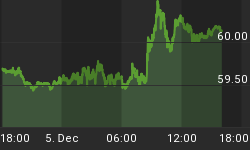When a minority group reaches over 50% of a population's size, they then become the new majority. As a majority, if they act together, they can have control.
The same holds true for Institutional Investors. As a group, they own more than 50% of the stock market and therefore their actions control what the stock market does.
Take a moment and look at the Institutional Investor Selling chart below (it is a chart that we post for our paid subscribers every day due to its importance.) When you look at the chart below, note how the NYA Index moves with the trending of the Institutional selling activity. (Realize that the Institutional selling trend moves "opposite" to the market because an increase in selling is a market negative. Conversely, a decrease in selling is a market positive.)
FYI ... also note the circle we drew on today's chart. Inside the circle is where you can see that the selling activity trend lines are just about merged. When they are merged, it signifies that they are so close to changing their trend that the next day will be a "test day" on the trending direction ... and that test day will be today and/or possibly Monday.
Yes, Institutional Investors have an unfair advantage, but today's investors who do not have the daily data of what the Institutional selling activity trending is, will not have the advantage that they need to compete.

















